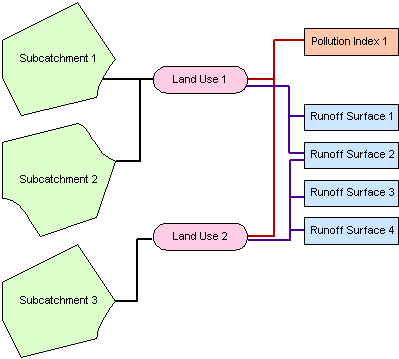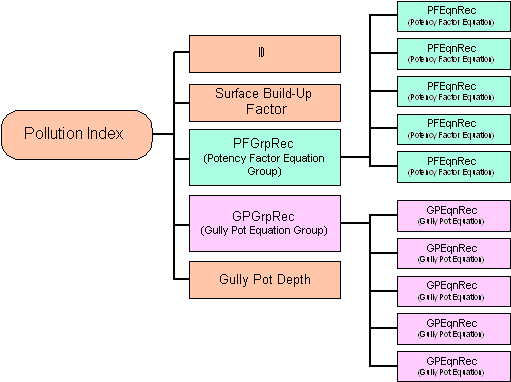This section is only relevant to Water Quality Simulations.
The Pollution Index is the water quality equivalent of a Runoff Surface:
- A Runoff Surface describes the hydraulic properties of an area of the catchment surface
- A Pollution Index describes the water quality characteristics of an area of the catchment surface
Runoff Surfaces and Pollution Indices are applied via a Land Use:
- For hydraulic runoff, you can divide the subcatchment into up to 12 areas by applying up to 12 Runoff Surfaces to the Land use
- The Land Use has just one Pollution Index, defining the water quality parameters of the entire subcatchment
The diagram below shows how a Pollution Index and one or more Runoff Surfaces are used to define subcatchment characteristics.
A Pollution Index or Runoff Surface can be associated with more than one Land Use. A Land Use can be associated with more than one subcatchment.

How Runoff Surfaces and a Pollution Index define subcatchment characteristics
Pollution Index Parameters
For each Pollution Index the following parameters must be defined in the Surface Pollutant Editor:
- Pollution Index ID
- a set of equations for potency of attached pollutants (one for each pollutant)
- a set of equations for dissolved pollutants in gully pots (one for each pollutant)
- a build up factor for surface sediment (based on type of land use)
- the gully pot volume
The diagram below shows how the various components combine together to define a Pollution Index.

Components of a Pollution Index Definition
